Why you can trust Tom's Hardware
To read about our monitor tests in-depth, please check out Display Testing Explained: How We Test Monitors and TVs. Brightness and Contrast testing is covered on page two.
Uncalibrated – Maximum Backlight Level
Our XG279Q comparison group is populated with DisplayHDR 400-certified screens with a mix of IPS and VA panels. From Gigabyte’s Aorus series are the FI27Q and CV27Q. Then we have the Razer Raptor 27, Dell S3220DGF and BenQ EW3280U.
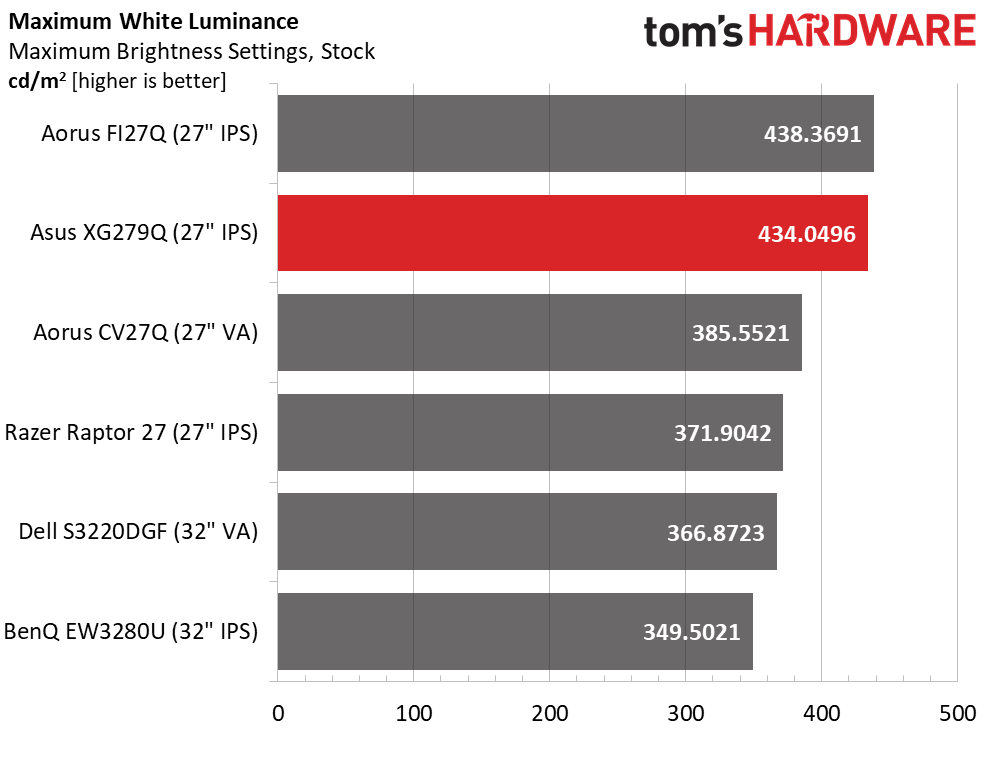
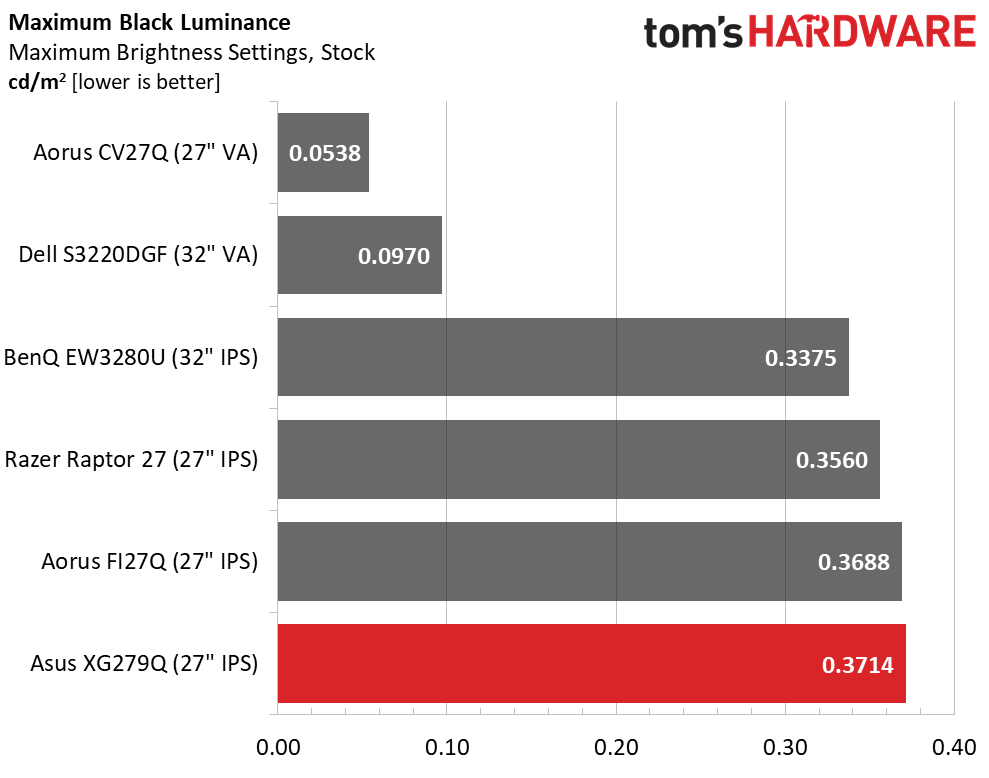
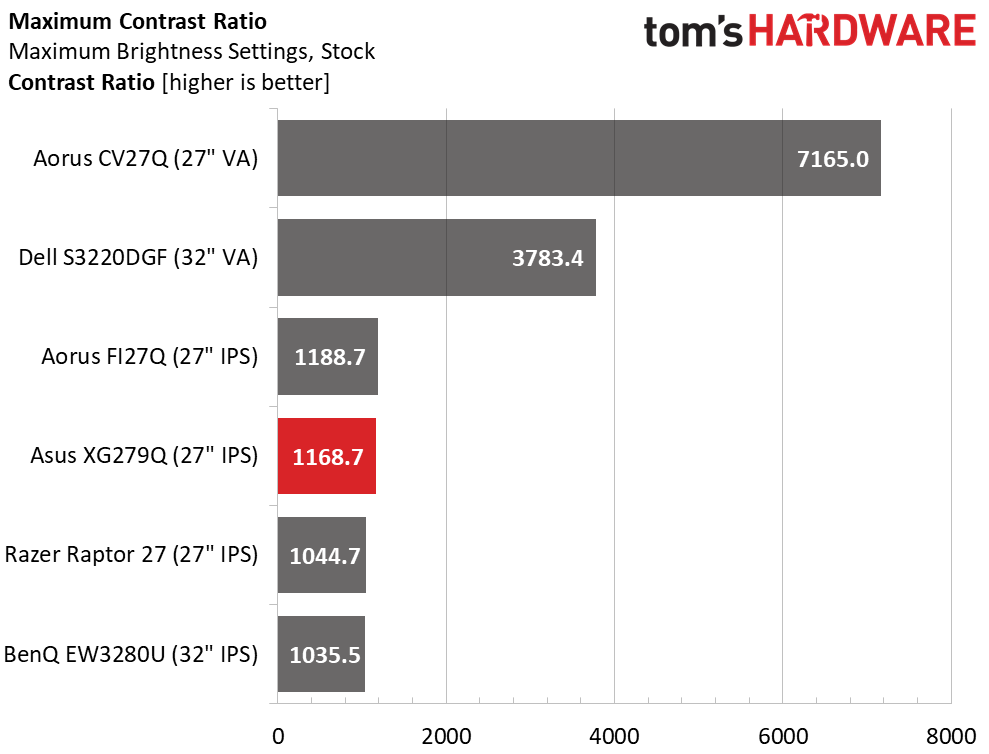
In SDR mode, all the screens provide ample light, with the XG279Q topping 434 nits peak. Its backlight has a large range that goes down to a minimum of 76 nits, a little too bright for gaming in the dark. Engaging the ELMB Sync drops the peak by only 17% which is barely noticeable. It’s one of the best backlight-strobe features we’ve seen to date.
A bright backlight and an IPS panel add up to high black levels putting the XG279Q in last place among the group. But the resulting contrast is a respectable 1168.7:1, higher than most IPS panels available today.
After Calibration to 200 nits
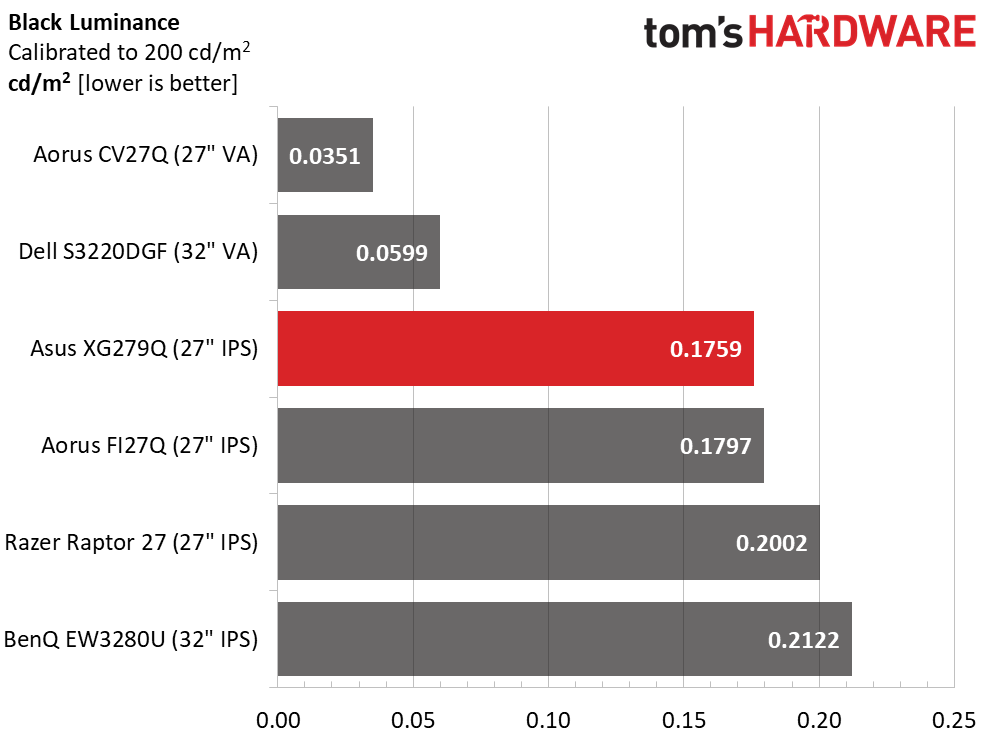
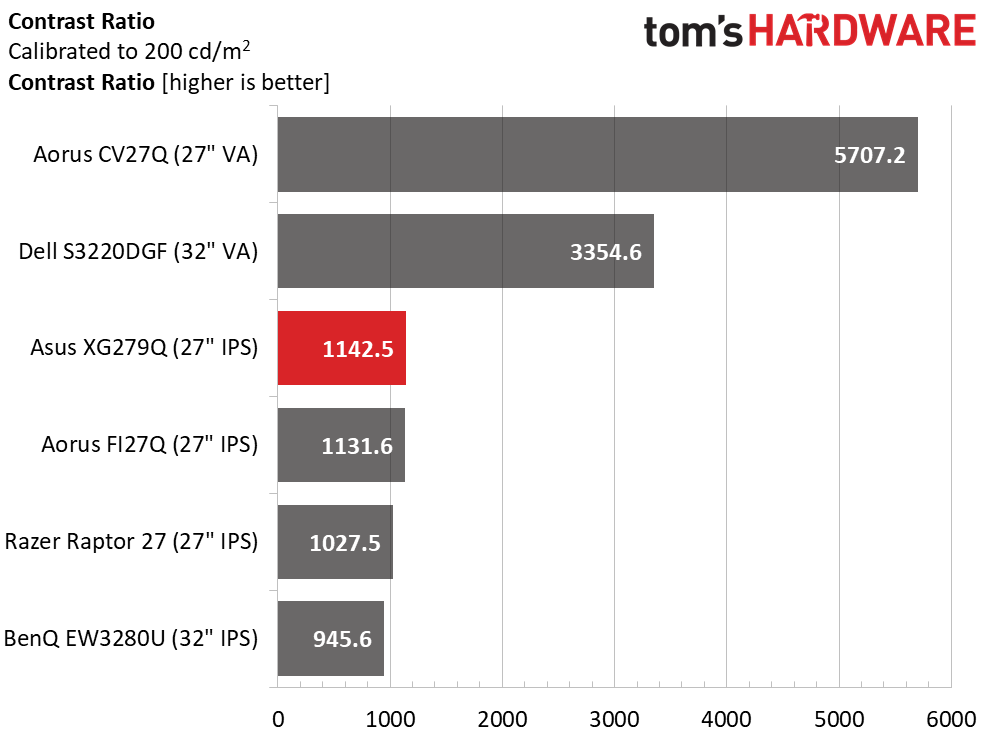
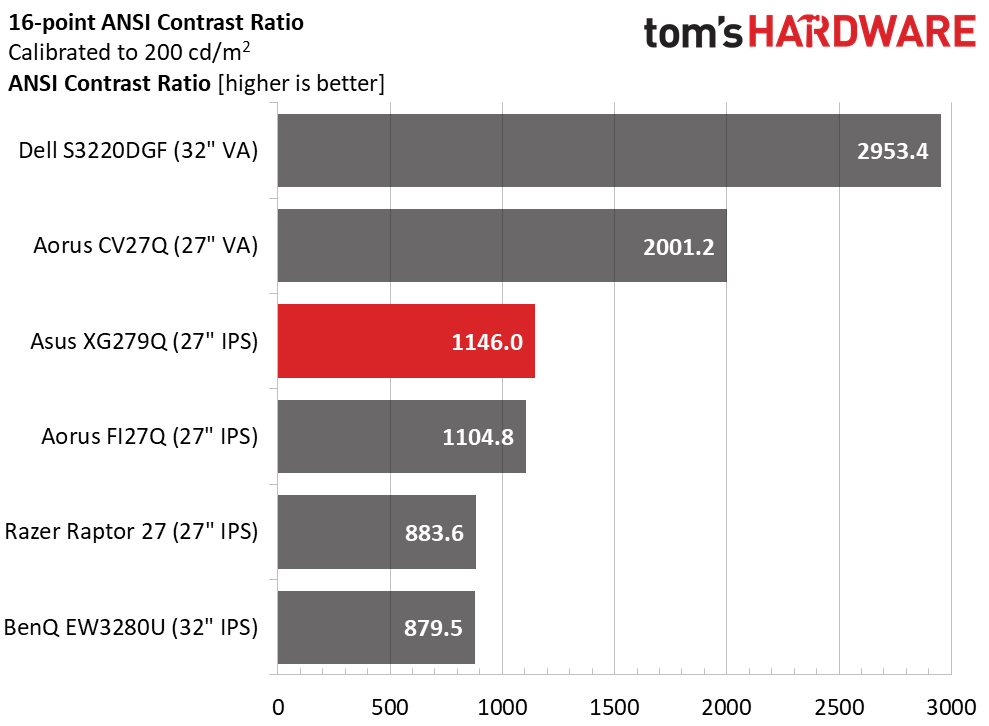
When all monitors are dialed in to 200 nits, the XG279Q’s black levels are good enough for third place and best of the IPS screens here. Contrast remains strong at 1142.5:1.
It’s rare that any monitor posts an ANSI value equal to or higher than its static score. The XG279Q is a very high-quality panel with excellent quality control and a precisely fitted grid polarizer. That contributes to good intra-image contrast and good screen uniformity as well. Among IPS monitors, it doesn’t get much better.
MORE: Best Gaming Monitors
Get Tom's Hardware's best news and in-depth reviews, straight to your inbox.
MORE: How We Test Monitors
MORE: All Monitor Content
Current page: Brightness and Contrast
Prev Page Features and Specifications Next Page Grayscale, Gamma and Color
Christian Eberle is a Contributing Editor for Tom's Hardware US. He's a veteran reviewer of A/V equipment, specializing in monitors. Christian began his obsession with tech when he built his first PC in 1991, a 286 running DOS 3.0 at a blazing 12MHz. In 2006, he undertook training from the Imaging Science Foundation in video calibration and testing and thus started a passion for precise imaging that persists to this day. He is also a professional musician with a degree from the New England Conservatory as a classical bassoonist which he used to good effect as a performer with the West Point Army Band from 1987 to 2013. He enjoys watching movies and listening to high-end audio in his custom-built home theater and can be seen riding trails near his home on a race-ready ICE VTX recumbent trike. Christian enjoys the endless summer in Florida where he lives with his wife and Chihuahua and plays with orchestras around the state.
-
DZIrl Are there any tests of monitor speed using high speed cameras?Reply
1ms means black to white or gray to gray? Under what circumstances? -
ArmandB I'd probably buy a monitor from another brand. I bought a VG279Q and a month out it would no longer run at 144hz without artifacting and blinking on/off. After a dozen ridiculous emails with suggestions like running the monitor at 60hz, finally sending the monitor in for an RMA to only have it come back two weeks later obviously not having been worked on as it had the same exact problem and me even sending a video of the issue which shows it happens instantly and is completely repeatable, I have given up and taken the monitor as a loss.Reply
Normally I like Asus, I've used ROG motherboards for my last few gaming systems, and like their WiFi routers. But after dealing with how completely incompetent their support is I won't buy from them again. -
Rockismyth Great review. I just purchased this and will be referencing the review for calibration when it arrives. I've been using the ASUS ROG PG27VQ for four years now and absolutely love it. I just started looking into purchasing a second for a dual setup. This seems to build upon that, so I'm excited to see how well it performs in what I'm going to throw at it. Gaming, Adobe's Creative Cloud suite, web/software dev and more. FTR this is will be my fourth ASUS monitor.Reply -
tummybunny Still waiting patiently for HDMI 2.1 monitors that can accompany a new 2.1 GPU and console.Reply